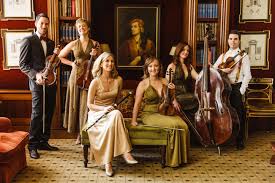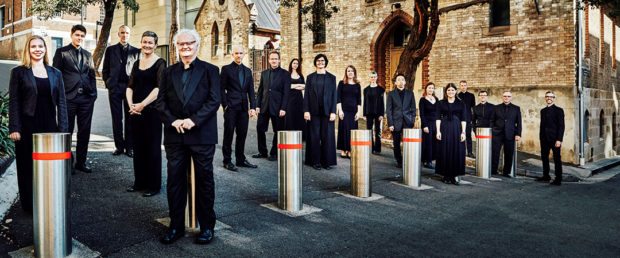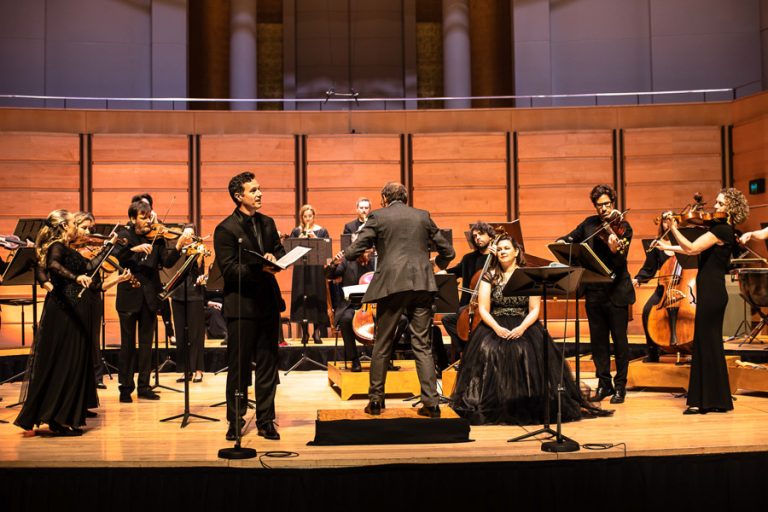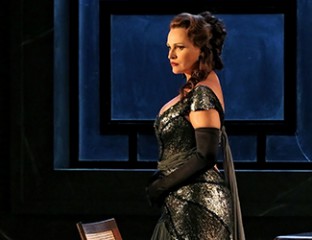Concert Review: Beethoven’s Piano Concerto/The Australian Haydn Ensemble

Beethoven’s Piano Concerto,
The Australian Haydn Ensemble,
Utzon Room, Sydney Opera House,
Monday 29th September 2014.
When Daniel Barenboim undertook his recently completed mission to perform and record all of Beethoven’s piano concertos, he did so playing a ‘concert grand’ piano, with a full orchestra – in the case of the recordings, the Staatskapelle Dresden, which he conducted from the piano.
Exponents of historically informed performance practice may argue against the veracity of these interpretations at least in the case of Beethoven’s early concertos. So it is with the freshest of eyes, that the Australian Haydn Ensemble performing on period instruments or replicas, presented Beethoven’s Piano Concerto at the Utzon Room of the Sydney Opera House earlier this week. The programme comprised a transcription of Beethoven’s Piano Concerto no 2 in B flat major opus 19 (1795) arranged by Stephen Yates for piano solo and string quintet (2014), WA Mozart’s String Quintet in G minor K 516 (1st movement) and his Symphony No 39 in E flat major K543 (1788) arranged for flute, string quintet and double bass by Giambattista Cimador (1805).
Guest artist Marc Destrubé led the ensemble from his 1685 violin in an elegant rendition of the appetiser, the first movement of Mozart’s String Quintet in G minor K516. His luminous tones and stylish phrasing created an excellent dialogue with the burnished hues of the two violas played expertly by Heather Lloyd and James Eccles.
Beethoven’s Piano Concerto No 2 was originally scored for solo piano, flute, two oboes, two bassoons, two horns and strings. The AHE commissioned Australian composer Stephen Yates to transcribe this work for solo piano and string quintet, marking the AHE’s inauguration of its Beethoven cycle with guest fortepiano soloist Neal Peres Da Costa. (In 2013, the AHE performed the Australian premiere of Franz Lachner’s transcription of Beethoven’s Piano Concerto No 1. Incidentally, Lachner has also transcribed this second piano concerto for pianos solo and string quintet and a comparison of the two would be engaging).
Neal Peres Da Costa delivered an enlightening preamble to the performance, describing the research that has gone into a historically accurate realisation of this work. Chronologically, the B flat major concerto was the first piano concerto that Beethoven composed, although it was later published as his second. The two are often considered together as examples of his early style. In fact, this work was an important showpiece for young Beethoven as he as he sought to make his name. Beethoven himself premiered this concerto in his public debut as a soloist on 29 March 1795, at Vienna’s Burgtheater.
Peres Da Costa observed that for this presentation the sound sources were true, with the string players performing on gut strings, flautist Melissa Farrow playing a one keyed ‘classical’ wooden flute, and the fortepiano, a copy of an instrument from 1790. Add to this the annotated text and the scene is set for a performance of the concerto as it would have sounded in Beethoven’s time. Stylistic practices of the period included arpeggiated chords as opposed to ones where all the notes are sounded simultaneously and an elasticity of rhythm.
Performing from a Bärenreiter urtext, Peres Da Costa and the ensemble delivered an extremely elegant and stimulating performance of this virtuosic piece.
After the interval, the performers reconvened for Mozart’s Symphony No 39 in E flat major. Scored for flute, pairs of clarinets, bassoons, horns and trumpets, timpani and strings, this arrangement is by Giambattista Cimador, an Italian composer, singer, violinist and nobleman of the late 18th century. His arrangements of several Mozart symphonies for flute and strings was apparently a result of the refusal of the King’s Theatre orchestra to play the original works because they were too hard! For this presentation, the fortepiano was re-positioned as a central member of the ensemble from its solo spot for the concerto. Clearly, the soundscape lacked the textures that would have been created by the original scoring for brass and a bigger woodwind section, but the transcription and expert execution, cast new perspectives on the sound of Mozart’s music.
Love them or hate them, transcriptions could detract from what the composer intended. Alternatively, sensitively handled, they can reveal new elements in the writing previously obscured by layers of instruments. Although some textures may be lost, others emerge and a reduction in the number and variety of instruments performing, can create a refreshing clarity and a lightness of texture that enables the listener – and perhaps even the performer – to discover the work anew.
The intimacy and the astringent acoustic of the Utzon Room were perfectly suited to the stylistic aims and skills of the AHE and enabled the audience to take a closer look at the instruments and converse with the musicians at interval.
The AHE performs with integrity and elegance. Their delivery is straightforward and sincere, devoid of artifice. They presented an evening of delightful and excellent entertainment. Formed less than three years ago by Artistic Director and Principal Violinist Skye McIntosh, this ensemble’s repertoire and playing are welcome features of the musical calendar.
Shamistha de Soysa for SoundsLikeSydney©
SoundsLikeSydney takes no fee for content.






